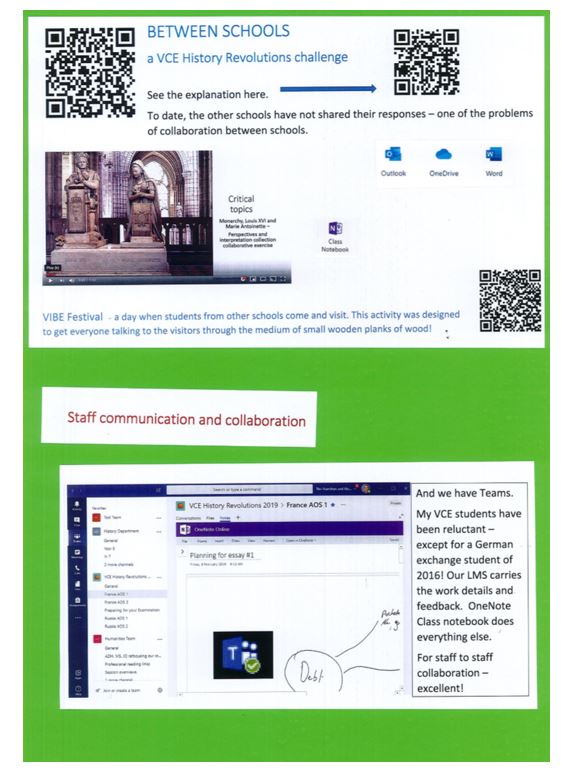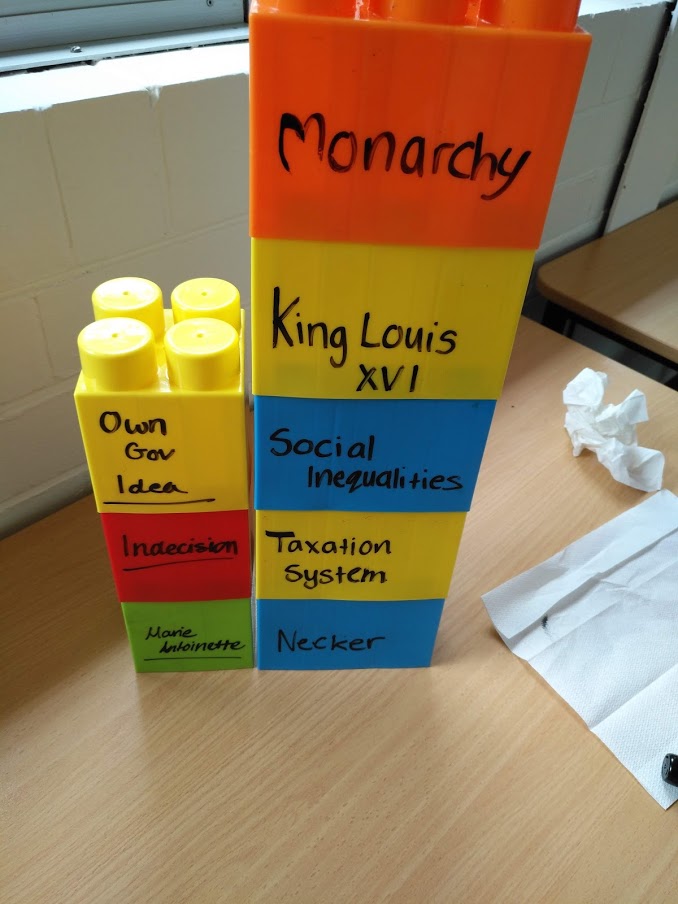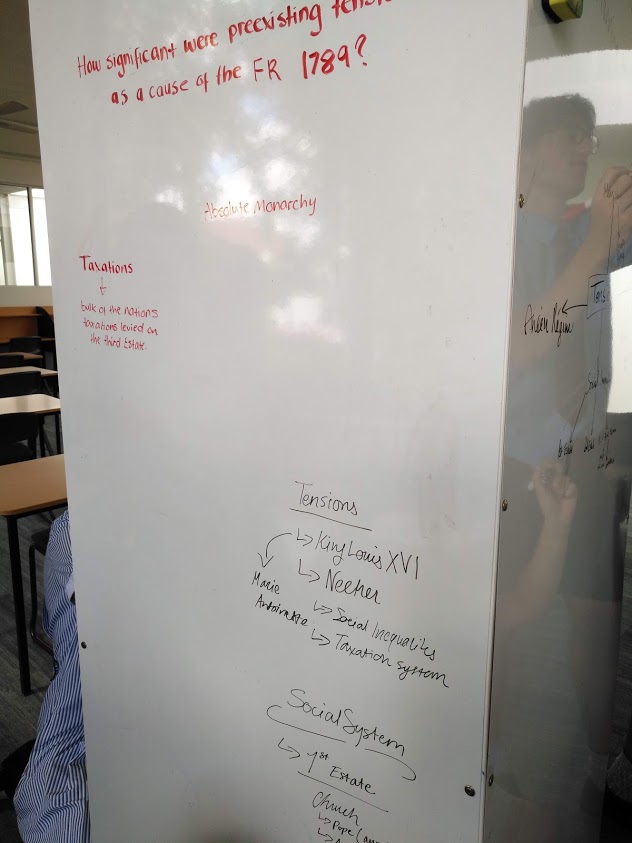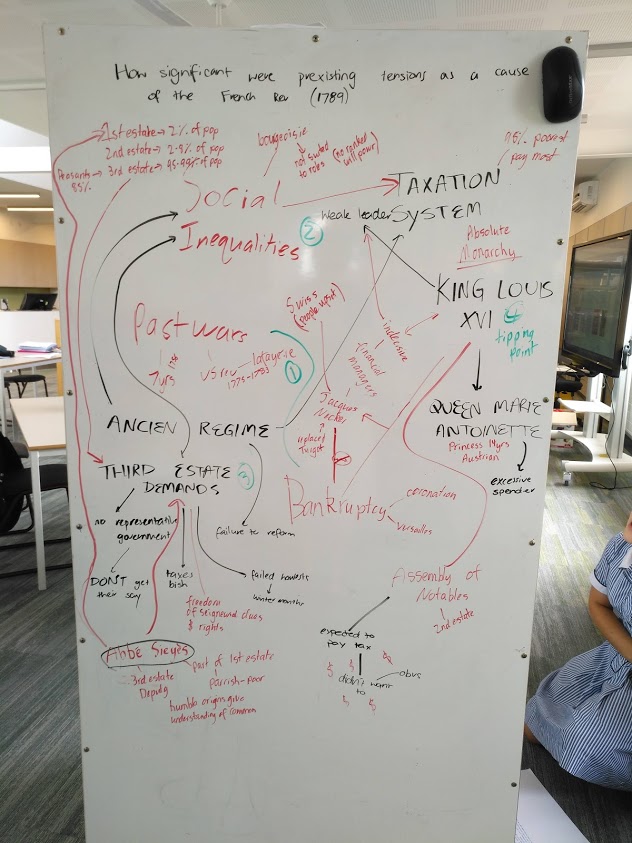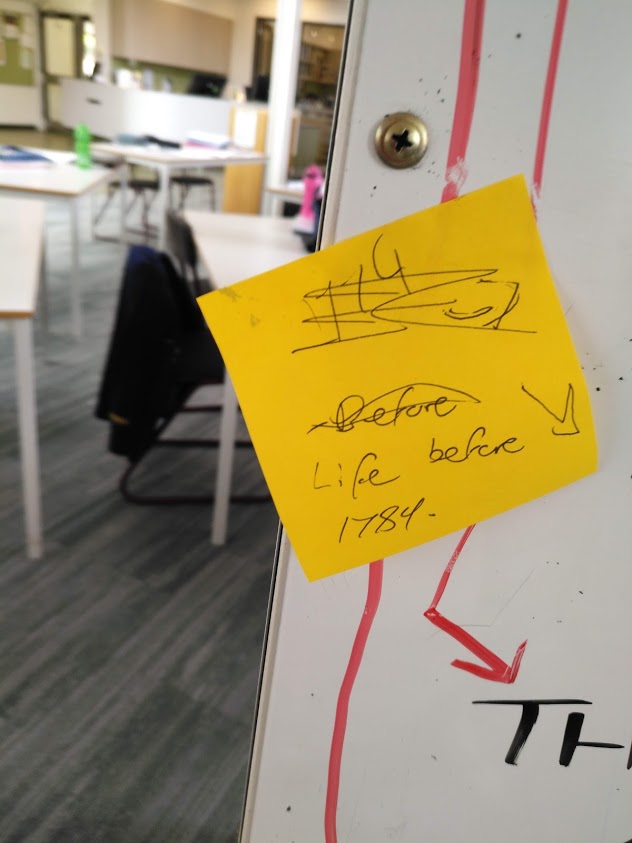The student 1:1 devices were not quite ready to be used and my timetable allocated me to one of the Year 6 classes to assist with an Inquiry Topic into World War 1. Hmm – how best to meet the brief?
I selected a number of texts from the Senior School Library, loaded them into a crate with wheels and headed north.
What did I choose? A range of texts about the “Great War” – including titles relating to Chinese soldiers, the Australian Imperial Forces (great language to discuss) and several volumes of the wonderful but underutilised Official history of Australia in the War of 1914-1918 by Charles Bean.
By taking these somewhat ancient tomes I was able to discuss the role of an official historian, censorship, and the age of our school (which is why we have these in our collection).
Students were invited to enter the book gallery and complete a table in any way that they felt appropriate.
The collaboration, obvious interest in content and active discussions around the room were wonderful to behold. The images below were taken with my staff laptop (Toshiba Z20) screen and they worked better than I thought they might.
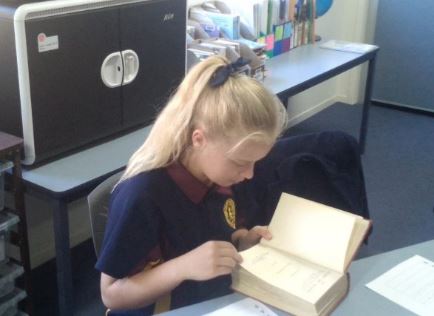

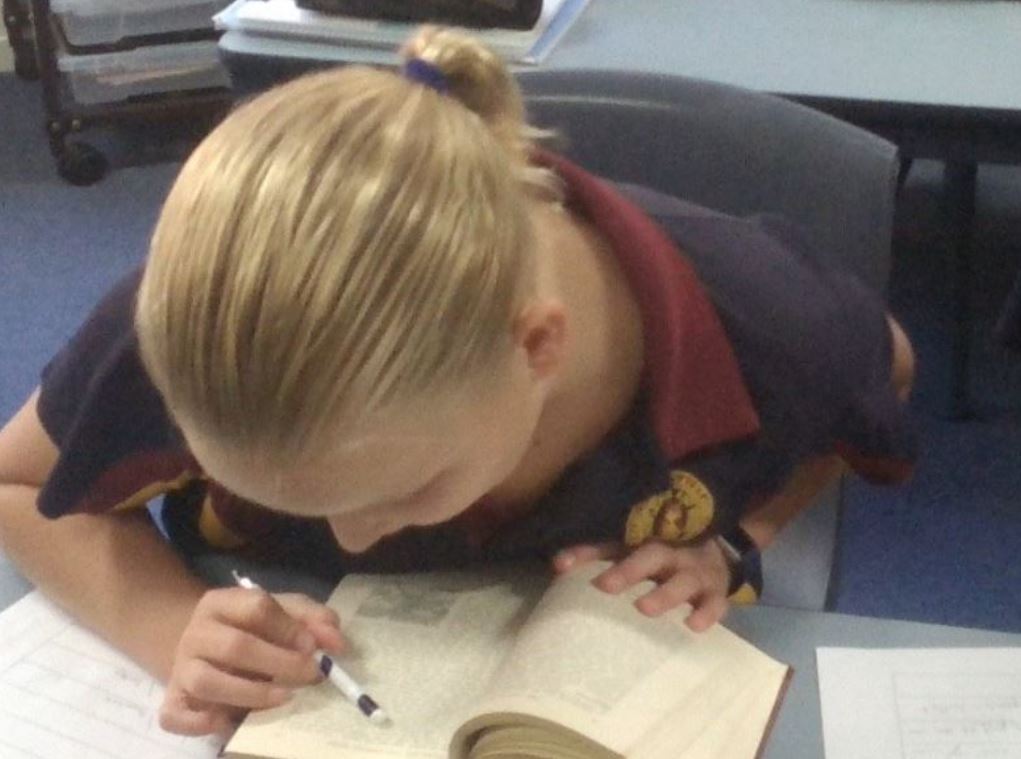


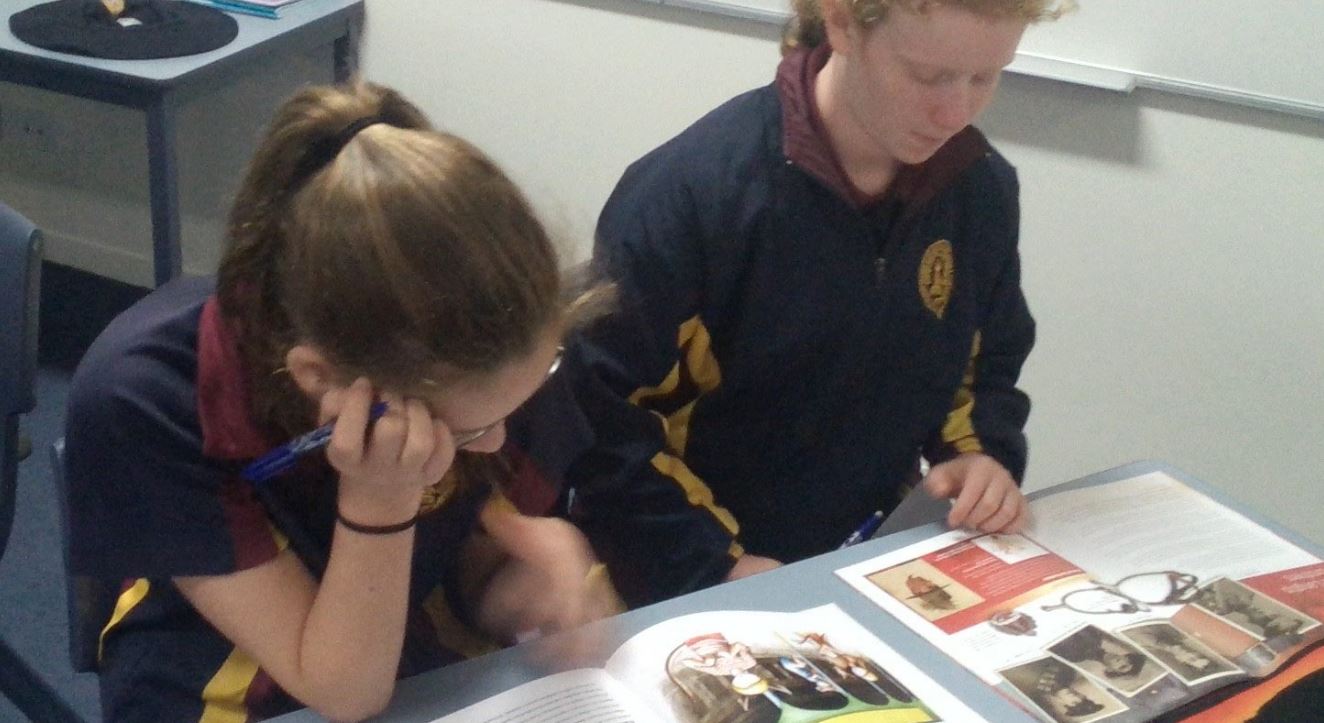


The Scene was set at the start with the opening paragraph from “The promise : the town that never forgets : n’oblions jamais l’Australie” by by Derek Guille, Kaff-eine (Illustrator), Anne-Sophie Biguet (Translator).
We had 50 minutes together and it was truly wonderful. Thank you 6R.






